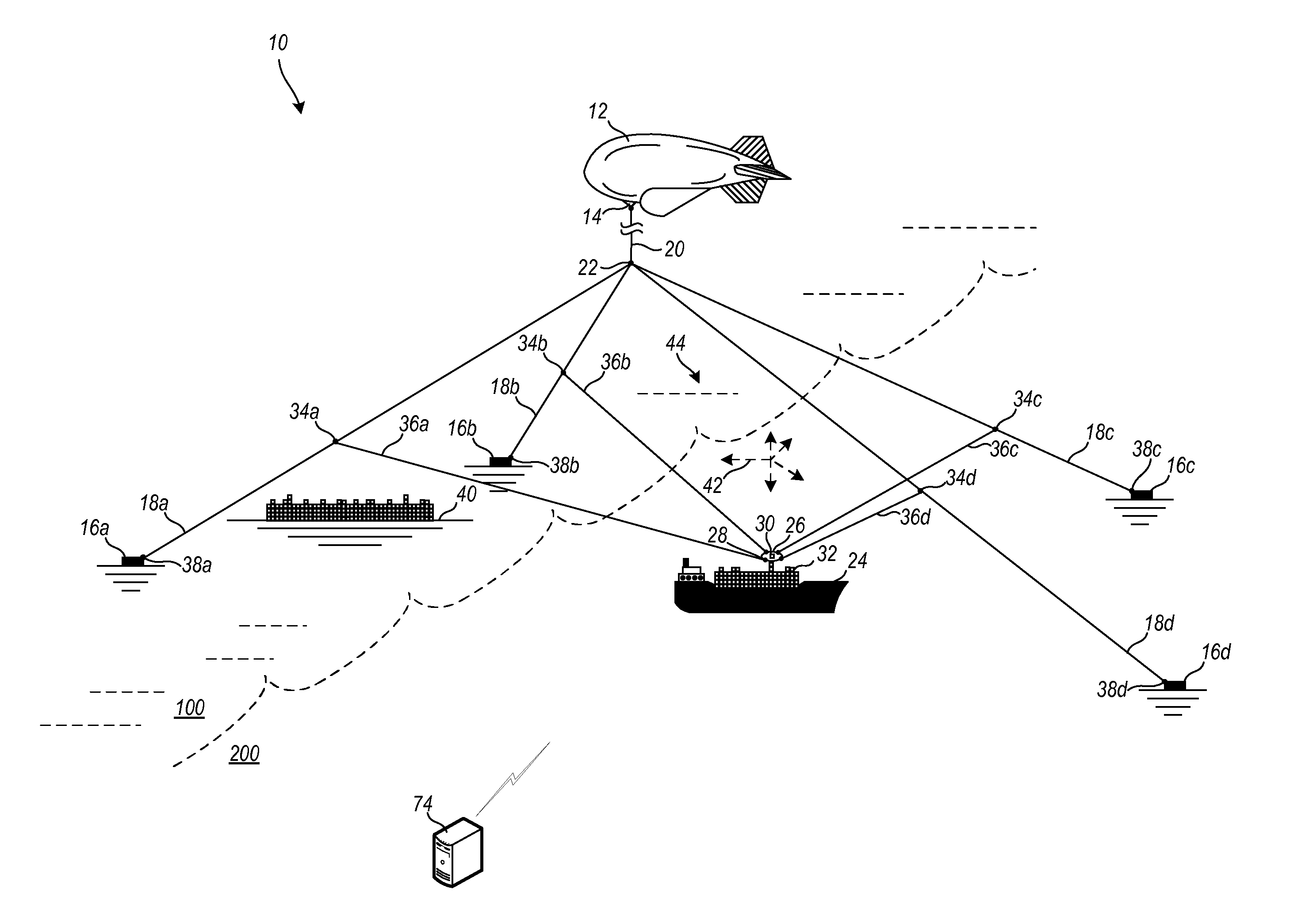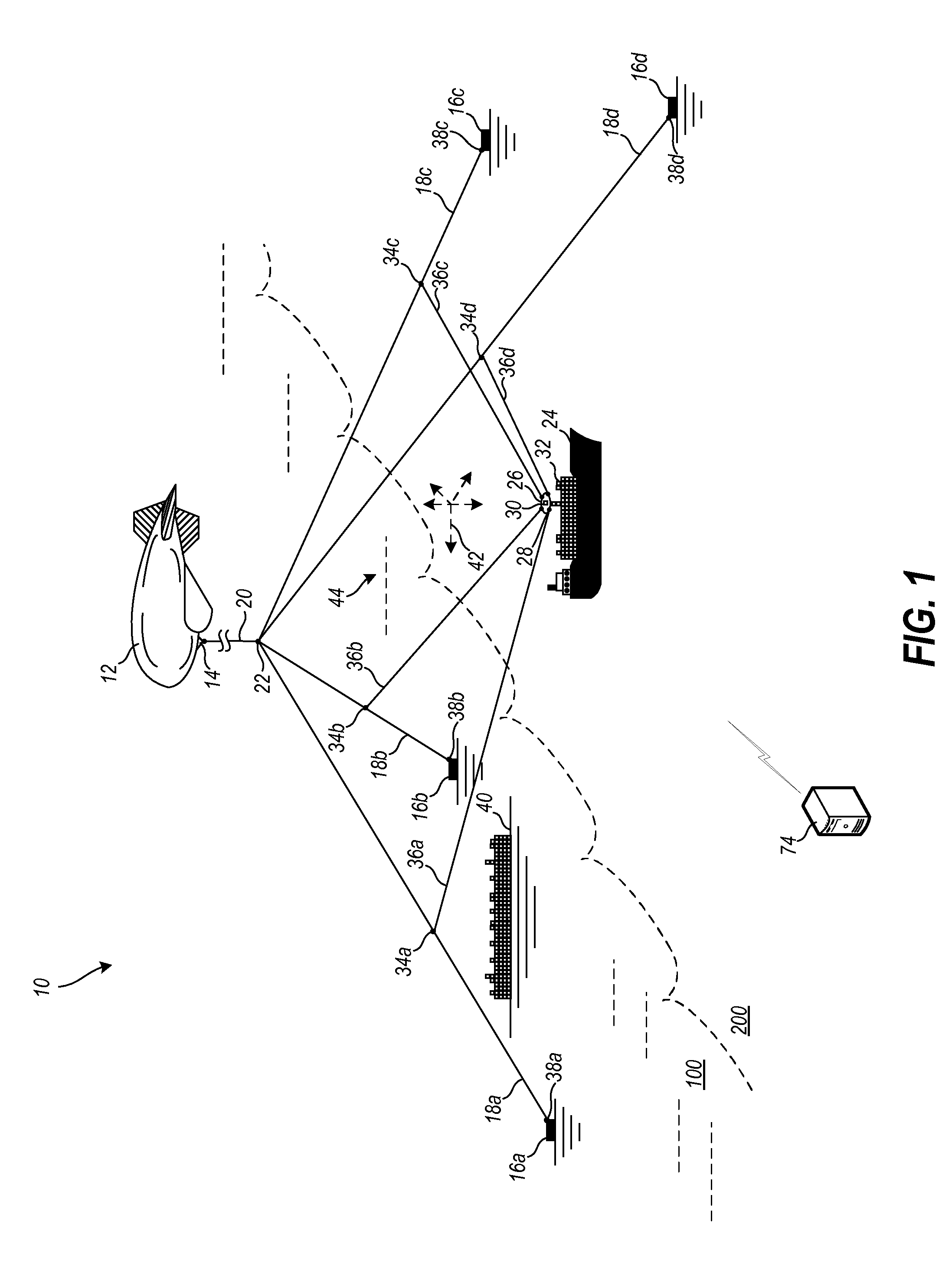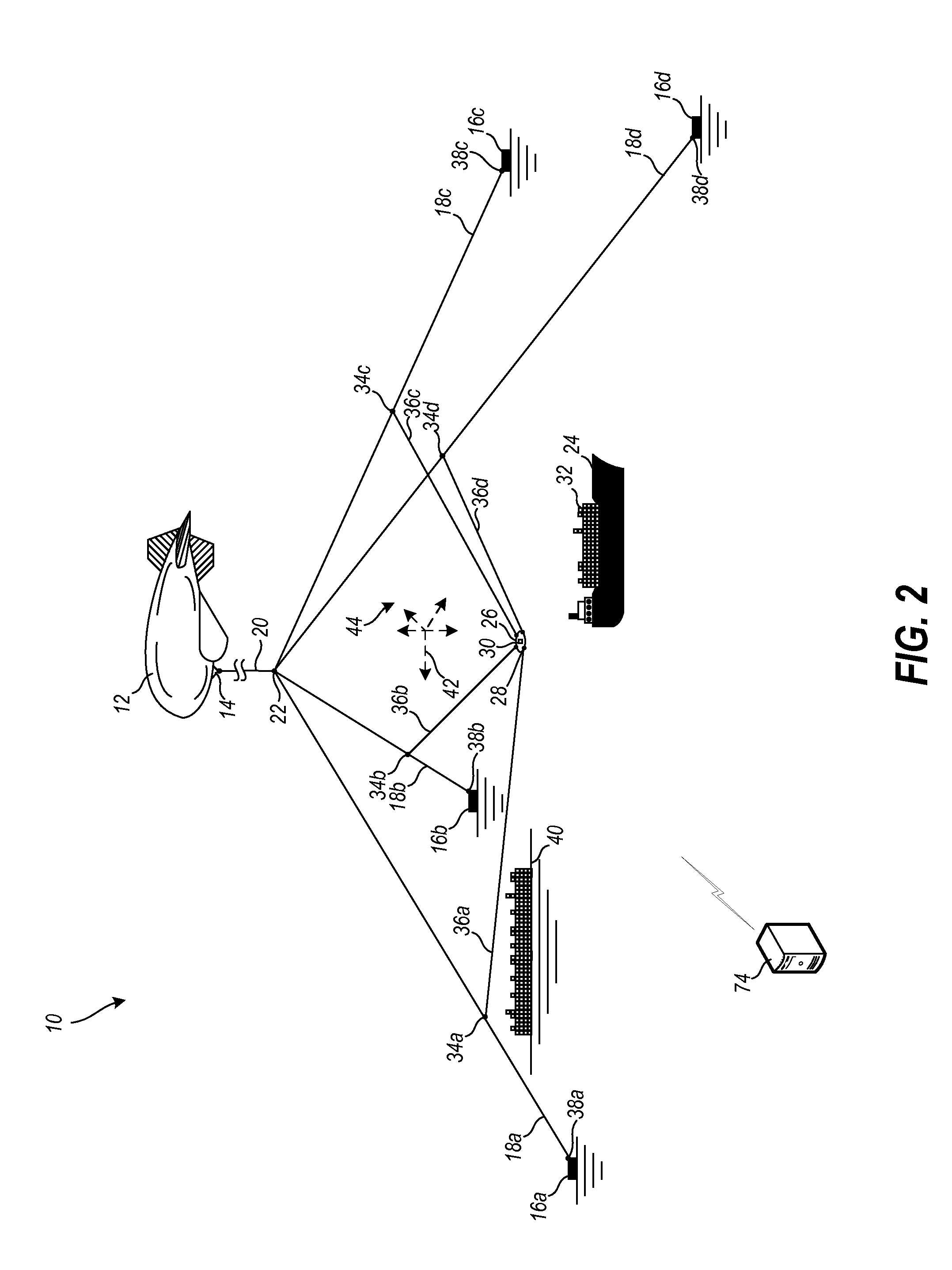Systems and methods for aerial cabled transportation
a technology of aerial cabled transportation and system, applied in the direction of transportation and packaging, lighter-than-air aircraft, floating buildings, etc., can solve the problems of energy storage and consumption devices that struggle to perform adequately within the confines of their platform, and achieve high configurable and high speed
- Summary
- Abstract
- Description
- Claims
- Application Information
AI Technical Summary
Benefits of technology
Problems solved by technology
Method used
Image
Examples
Embodiment Construction
[0049]Before describing the disclosed embodiments of this technology in detail, it is to be understood that the technology is not limited in its application to the details of the particular arrangement shown here since the technology described is capable of other embodiments. Also, the terminology used herein is for the purpose of description and not of limitation.
[0050]In various exemplary embodiments, the technology described herein provides for the creation of an atmospherically-lifted multi-tethered structure in a semi-stationary position in the atmosphere, which supports cabled cargo handling operations within the three-dimensional space beneath the structure, allowing cargo loads to move directly from source to destination in that same space (between the ground and the atmospherically-suspended structure itself). The design combines a highly configurable aerial platform with the usefulness of complex cargo transportation systems to enable transit both at high speeds over long ...
PUM
 Login to View More
Login to View More Abstract
Description
Claims
Application Information
 Login to View More
Login to View More - R&D
- Intellectual Property
- Life Sciences
- Materials
- Tech Scout
- Unparalleled Data Quality
- Higher Quality Content
- 60% Fewer Hallucinations
Browse by: Latest US Patents, China's latest patents, Technical Efficacy Thesaurus, Application Domain, Technology Topic, Popular Technical Reports.
© 2025 PatSnap. All rights reserved.Legal|Privacy policy|Modern Slavery Act Transparency Statement|Sitemap|About US| Contact US: help@patsnap.com



